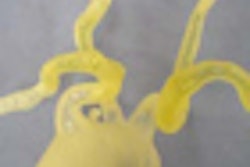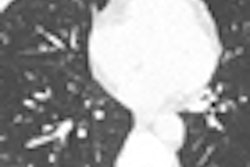Advanced visualization firm TeraRecon is showcasing a suite of new volumetric imaging tools for its iNtuition software at the RSNA 2011 meeting in Chicago.
Lobular decomposition is an analysis and segmentation tool that aids the evaluation of anatomical structures or regions that intertwine with a tree-like structure.
Volumetric histogram supports the analysis of a given volume of interest based on partition of the constituent voxels into populations of different intensity or density ranges. This can be used, for example, to support research into disease processes such as cancer.
Motion analytics reformats 4D images for 2D presentation to improve the communication of findings when interactive 3D or 4D is unavailable.
Multi-KV provides support for established applications of dual-energy or spectral imaging CT data, such as removal of bone or contrast, as well as toolkits to support research and investigation of new applications of such imaging techniques.
Findings Workflow supports progressive analysis of serial acquisitions for the same patient. Each finding can be tracked across multiple examinations, in a table that is maintained indefinitely in the iNtuition system's database, without requiring the prior scans to remain present on the system.
iGentle ensures that iNtuition's suite of segmentation, centerline, and metadata extraction tools work effectively, even with noisy scans characterized by low-dose acquisitions. Metadata are extracted from enhanced copies of the original scan, then applied back onto the original, unmodified data, to improve performance of 3D tools without denying access to the original scan data.
Also included is enhanced multimodality support, such as for PET/MR fusion, and improved applications for MR, such as time-intensity analysis and parametric mapping tools.



















